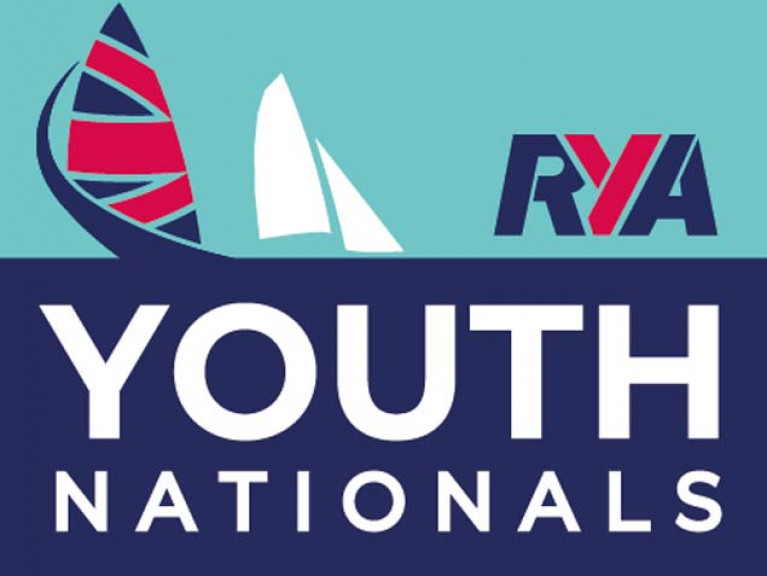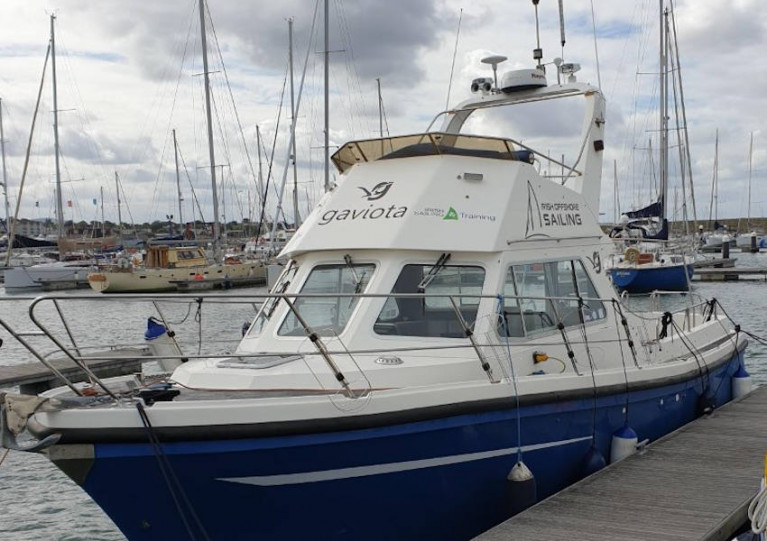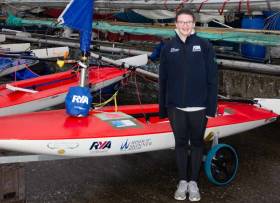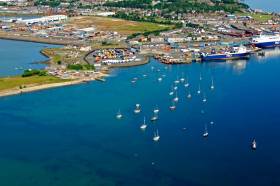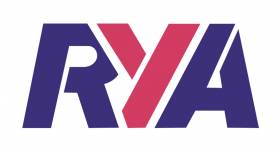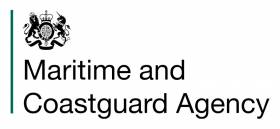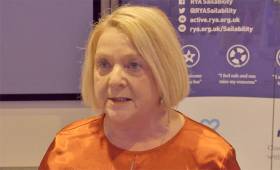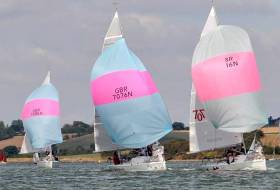Displaying items by tag: RYA
Windfoiling Debuts at 2020 RYA Youth Nationals
The RYA Youth Sailing National Championships will enter an exciting new era in 2020 with the latest Olympic discipline of wind foiling set to make its debut.
Windfoiling, an evolution of windsurfing, will replace the RS:X at the Paris 2024 Olympics and will be the third class to 'fly' alongside the Nacra 17 and Formula Kite.
To ensure that youth racing in the UK remains at the cutting edge of the sport, the RYA Youth Nationals will feature three foiling windsurfing fleets racing Starboard IQFoil boards.
It follows the introduction of kitefoiling, another new Olympic discipline, at the 2019 regatta, the UK's premier youth racing event.
Kitefoiling returns to the Youth Nationals in 2020 alongside the highly-contested Laser, Laser Radial, 420, Nacra 15 and 29er - all British Youth Sailing Recognised classes.
Entries are now open to the Youth Nationals, which will be hosted at Plas Heli, the Welsh National Sailing Academy and Events Centre, from April 3 to 10.
Irish Offshore Sailing has extended its sail training and yacht racing programmes for 2020 with a full range of motor cruising courses on a specially fitted-out and coded motor yacht.
Skippered by Yachtmaster Instructor Peter Beamish, the training boat is a Lochin 333 Harbour Pilot named Gaviota. Fitted with twin Perkins 300 HP engines, she has a cruising speed of 16 knots and a top speed of 24 knots.
Fully equipped with modern instruments and electronic engine controls, Gaviota is commercially coded in Ireland and the UK, and has all the safety equipment required for up to 10 people
Irish Offshore Sailing is now the only Irish Sailing and RYA recognised training centre in Ireland that can offer motor cruising courses which include Start Motor Cruising, Helmsman, Day Skipper, Advanced Pilotage, Coastal Skipper, and Yachtmaster Offshore Power.
See IrishOffshoreSailing.com for the full schedule of all motor cruising courses in 2020. And for more information please contact Peter Beamish on 087 672 9999.
A young sailor from Killyleagh has been awarded her own boat thanks to a national programme helping young talent progress in the sport.
Autumn Halliday (12), who is a junior member of Strangford Lough Yacht Club (SLYC), will have exclusive use of the boat for the next two years through the on-going partnership between the John Merricks Sailing Trust and RYA OnBoard,
Launched in 2013, the partnership supports youngsters who display enthusiasm, drive, talent and commitment to the sport and who may not ordinarily have the opportunity or financial backing to achieve their goals. In its six years, 76 boats and boards have now been donated with some remarkable success stories.
Autumn, a pupil at Regent House Grammar School, joined SLYC just three years ago with no previous experience or knowledge of sailing. She loved the sport and made lots of friends as well as showing great potential in her sailing skills as she progressed through the RYA levels. She is a dedicated junior member of the cub and is always on hand to help others and encourage them to get on the water.
Speaking about her joy in receiving the boat, Autumn said: "I am so happy and excited to have a brand new boat to use for two years, especially as everything will work properly on it! It will be great to take it wherever and whenever I want for training and racing.”
Her mother Nicola said: “I am very grateful for the opportunity that has been given to Autumn. Until now I have had to hire Toppers where they are available and there is no guarantee everything will work properly. This also limits where and when Autumn can train and compete.
“With the use of a new Topper this will enable Autumn to travel and participate in as many competitions as possible and have the use of a boat equivalent to her peers. It will also allow her to get out on the water during any free time to develop her skills.”
Autumn is aspiring to compete in the 2021 World Championships in Cork.
Winning the boat will allow the ambitious young sailor to develop her skills in the knowledge that some of the younger sailors at her club will benefit from the boat in the future.
RYANI’s High-Performance Officer James Farrell said: “It is fantastic to see Autumn awarded with her own boat. She is an enthusiastic and talented young sailor and a great ambassador for the sport. At RYANI we are looking forward to seeing Autumn develop her skills now that she has her own boat to practice in, we are confident she will achieve great things.”
The JMST seeks to help young sailors and youth sailing organisations to achieve their goals and was set up in the memory of 1996 Olympic silver medalist, John Merricks. As OnBoard's official charity partner, JMST will donate at least 80 single-handed junior pathway boats and boards to promising sailors over eight years, giving them the chance to progress their skills and continue to participate in the sport.
Hannah Cockle, RYA OnBoard Operations Officer, added: "We cannot thank JMST enough for continuing to support the programme. For many of the winners it will be the difference between continuing in the sport and not. It is such a thrill telling the sailors and their families they have been successful because we know what a difference getting a boat or board will make to their lives.
"OnBoard is all about making it easier and cheaper to get more young people aged 8-18 on the water regularly and that is what the JMST partnership helps to achieve.”
This year's recipients all applied for and were awarded their new boats or boards after attending their respective British Youth Sailing Regional Junior Championships at the end of September. Declarations of Eligibility for next year's applications will open in July 2020.
Since 2005, OnBoard has helped over three-quarters of a million young people try sailing and windsurfing and learn an activity that often stays with them for life. The programme enables youngsters to enjoy all the excitement and relaxation being on the water offers, whilst nurturing a wide range of broader learning benefits and invaluable life skills, from problem solving to leadership and teamwork.
Two NI Clubs Make Final List For RYA/Yachts & Yachting Club Of The Year 2020
Strangford Lough Yacht Club and East Antrim Boat Club in Northern Ireland have been named among the 10 finalists selected for the RYA and Yachts & Yachting Club of the Year Award for 2020.
East Antrim Boat Club is also among five of the finalists recognised for particular achievements, with the Larne Lough club acknowledged for ‘Embracing Modern Communications’.
The annual RYA and Yachts & Yachting Club of the Year Award, supported by Gallagher, recognises the outstanding achievement of sailing clubs across the UK and promotes the hard work and dedication that goes into running a successful club.
Voting opens on Friday 13 December, and the award presentations and overall winner announcement will be made at the RYA Dinghy Show 2020 on Saturday 29 February.
Who Says You Can’t Enjoy Sailing? — RYA Supports Charity Campaign To Challenge Perceptions Of Disability In Sport
The RYA is welcoming the launch of a UK-wide disability inclusion campaign and highlighting the benefits of sailing for all participants.
The Activity Alliance’s Who Says? campaign is calling time on negative perceptions about disability, inclusion and sport.
It was created in response to the national charity’s recent research, which explored people’s attitudes on inclusive activity and found that a lack of understanding could be creating long-lasting barriers for people with disabilities.
The findings of the research showed a general lack of awareness, inexperience and unfamiliarity with disabled people although there was a good awareness that sport should be for everyone.
Non-disabled respondents also recognised that they could benefit from taking part in inclusive activities.
However, non-disabled people were concerned about the negative impact taking part together may have on the wellbeing of disabled people.
The top three concerns were that they may patronise disabled people (53%), disabled people may get hurt (47%) or that they may say something inappropriate (37%).
The aim of Who Says? is to empower people to challenge their own and other people’s perceptions through a series of short films.
RYA safeguarding and equality manager Jackie Reid said: “The research shows that certain perceptions around disability in sport should be challenged and it is time for an awareness raising initiative like the Who Says campaign.
“At the RYA we operate on the basis that sailing and boating are open to anyone, no matter what their age or disability and our aim is to facilitate the inclusion of all sailors, whether they want to compete or just have fun on the water.”
The RYA says all of its clubs and training centres should be able to respond appropriately to an enquiry from someone with a disability, and discuss whether they are able to make reasonable adjustments to meet that individual’s needs.
Sailability is the RYA’s national programme in the UK giving people with disabilities the chance to try sailing and to take part regularly.
The British network of more than 200 RYA-approved sailability sites have boats and facilities to cater for people across the whole spectrum of abilities.
RYA sailability manager Joff McGill said: “Challenging perceptions can make a real difference to whether people can get out on the water or not.
“With over 200 locations across the UK, it is easy to get on the water near you and staff and volunteers across the sailability programme are committed to open and positive conversations about what it takes to get each person sailing.
“There are so many benefits – being active, improving wellbeing, new social connections and learning new skills.”
To find out more about sailing opportunities for disabled people, or those that need specific support to get on the water, visit the RYA’s sailability programme web page.
The UK’s Maritime and Coastguard Agency (MCA) wants to hear recreational boaters’ views on six draft Marine Guidance Notes (MGN) concerning guidance on boat safety over the next few weeks.
RYA cruising manager Stuart Carruthers said: “The MCA has launched this consultation following the Cheeki Rafiki trial where the judge commented that there were aspects not covered by the construction standards for small commercial vessels which should be considered best practice.
“The RYA already provides a considerable amount of safety advice that is readily accessible by the boating public and intends to submit a full response, outlining our views and the concerns of our members.
“Our response will focus on the interests of pleasure boaters with the aim of ensuring that any guidance is clear, realistic and proportionate.”
The six notices cover guidance on keel groundings, rigging inspections, preparedness, stowage of lifesaving gear, vessel resilience and emergency procedures, and maintenance, modifications, damage and repairs.
They are aimed at both small commercial vessels as well as pleasure boats.
The MCA states that it wishes to reinforce to owners, managing agents and skippers of both commercial and pleasure vessels what it considers good practice in terms of safety when going out to sea.
Boaters’ views are sought in the following areas:
- Whether the draft notes contain guidance that is realistic to carry out in practice
- What other costs and benefits there might be that haven’t been included in the de minimis assessment
- If there is the right level of content in each MGN
Full details on the draft MGNS and how to give your views can be found on the UK Government website. A full list of consultation questions is contained in Section 5 of this consultation.
The consultation closes on Thursday 18 July and the RYA encourages all UK boaters to respond.
Belfast Lough Sailability Recognised For ‘Exceptional Contribution’ In RYA Awards
#Sailability - Anne Taylor of Belfast Lough Sailability was one of three winners of this year’s Exceptional Contribution Awards in the RYA Sailability Annual Awards last weekend.
Held at the Sailability National Conference and Awards dinner at Wyboston Lakes on Saturday (16 February) — with more than 160 delegates representing 57 sailability sites across the UK in attendance — the awards recognised individuals and organisations whose contribution and achievements have made a real impact.
The Exceptional Contribution Awards are presented each year individuals who, over a considerable period have shown exceptional commitment and dedication to boating and getting people on the water.
Belfast Lough’s Anne Taylor said: “My son had a very serious illness and we were very lucky that he made a full recovery. He may not have and if he hadn’t, he would have needed something like sailability to keep his spirits going.
“I’m absolutely delighted to have won this award, I think it’s excellent for our group, Belfast Lough, and for raising the profile of sailability in general.”
A new award this year was the #MoreThanSailing Award, recognising a new and innovative project, activity or piece of work that has enabled inactive disabled people to become more active. The first ever recipient was Jon Gamon and the SEAS Sailability group at the Conway Centres in Anglesey, North Wales.
Jon Gamon commented: “It’s great to take this award back to North Wales, setting up the SEAS Sailability group has been a real community effort, there’s been lots and lots of people involved and to be able to take this back to the Conway Centres and show everyone, they’ll all be really proud. It means such a lot, it’s amazing.”
RYA sailability manager Joff McGill added: “Congratulations to all of this year’s award winners. The Sailability Annual Awards recognise the dedication, commitment and contribution of so many, but of course it’s way more than that, there are so many other people who have given so much and we’re just recognising a few of them.”
UK Sailmakers Ireland Renews Its In-House Certification
Rob Taylor from the Royal Yachting Association (RYA) was at UK Sailmakers Ireland loft in Crosshaven yesterday (Wednesday 23 January) for the refreshing of its In-House Certification (IHC).
UK Sailmakers in Crosshaven is the only IHC loft in Ireland – since Des McWilliam's days – and must renew this status every four years as per World Sailing requirements.
To that end, Rob Taylor from the RYA was in Crosshaven yesterday to check over the loft’s records and measurement methods to confirm the required consistency with worldwide practice.
This ensures that if you are measured at events such as the IRC Europeans or Cork Week, the methods and results those measurers get are the same as those taken on the UK Sailmakers Ireland loft floor.
Parasailing, Kiteboarding & Topper Dinghies Join Fleet For RYA Youth Nationals Next Spring
Parasailing and kiteboarding have been added to the list of events at the 2019 RYA Youth Championships to take place in Weymouth next spring.
Entries are now open for the new-look regatta from 12-19 April 2019, which also welcomes the Topper and Laser 4.7 into the fold along with the Laser Radial, 420, 29er, Nacra 15 and BIC Techno 293.
The inclusion of the RS Venture Connect, Hansa 303 and 2.4mR parasailing classes, the RYA says, “reaffirms British Youth Sailing’s commitment to their long-term future in the UK by continuing to develop a pathway.”
In addition, twin-tip kiteboarding will feature after Formula Kite’s inclusion in the list of events for the 2024 Paris Olympics.
Entrants must be aged under 21 on 31 December 2019 with the exception of the 420, Topper, Twin Tip and para classes. Further details of requirements can be found in the Notice of Race.
More information can be found in the Notice of Race, while an overview of the regatta and details of discounted early bird entries can be found on the RYA website HERE.
The Royal Corinthian Yacht Club, Burnham-on-Crouch (RCYC), and the Royal Yachting Association (RYA) have announced the launch of the Keelboat Endeavour Trophy writes Sue Pelling.
The aim of this new event, scheduled to take place on 22-23 September 2018, is to establish the UK keelboat champions of champions’, in a similar format to the long-running and successful annual Endeavour Trophy for dinghies.
Using up to six of the RCYC’s fleet of 707s, the Keelboat Endeavour Trophy will be run in a British Keelboat League-style knock-out format with 25 plus races over the weekend, and with RYA on-the-water umpires keeping an eye on proceedings.
The team behind the RCYC and RYA joint venture, including Edwin Buckley (RCYC Event Director), Bas Edmonds (RYA Racing Services Manager) and Jack Fenwick (RYA Keelboat Development Manager) say after three years in the planning they are thrilled to finally be able to launch the event.
Edmonds commented: “It has been a long time coming but we are now in a position to run an event that we [RYA and Royal Corinthian YC, Burnham-on-Crouch] believe will become as significant as the dinghy Champion of Champions’ Endeavour Trophy.
“As far as entries go, we are trying to be as inclusive as possible, particularly in the first year so classes like the J/109, J/111, Fast40s, and potentially the IRC national champion have the opportunity to come along. We also expect to see a large contingent of champions from classes like the Squibs, Flying 15s and local one-designs that run a national championship and have exceptionally high quality competition.
“The launch of this event couldn’t have come at a better time because we are really noticing a bit of ascendancy in keelboat racing at the moment. Certainly the smaller dayboats are seeing a resurgence.
“Overall, I think it is a really good time for keelboat sailing and I can confirm the Royal Corinthian at Burnham, and the RYA are pretty excited about having an opportunity to showcase keelboat sailing at its best.”
Buckley, who is delighted to be able to build on the success of the Endeavour, added: “This is also another step in history of the Endeavour and I know that the original founders of the dinghy event that celebrates 58 years this year, would be delighted to see the Endeavour Trophy evolve by expanding the event from dinghies to keelboats.”
A total of 24 keelboat teams are expected to contest the title, which will take place over short, windward/leeward courses on the tactical, tidal waters of the River Crouch and Roach.
The organisers of the event are keen to encourage keelboat classes to lodge an interest in putting forward class representatives from the 2018 national championships that take place throughout the summer.


























